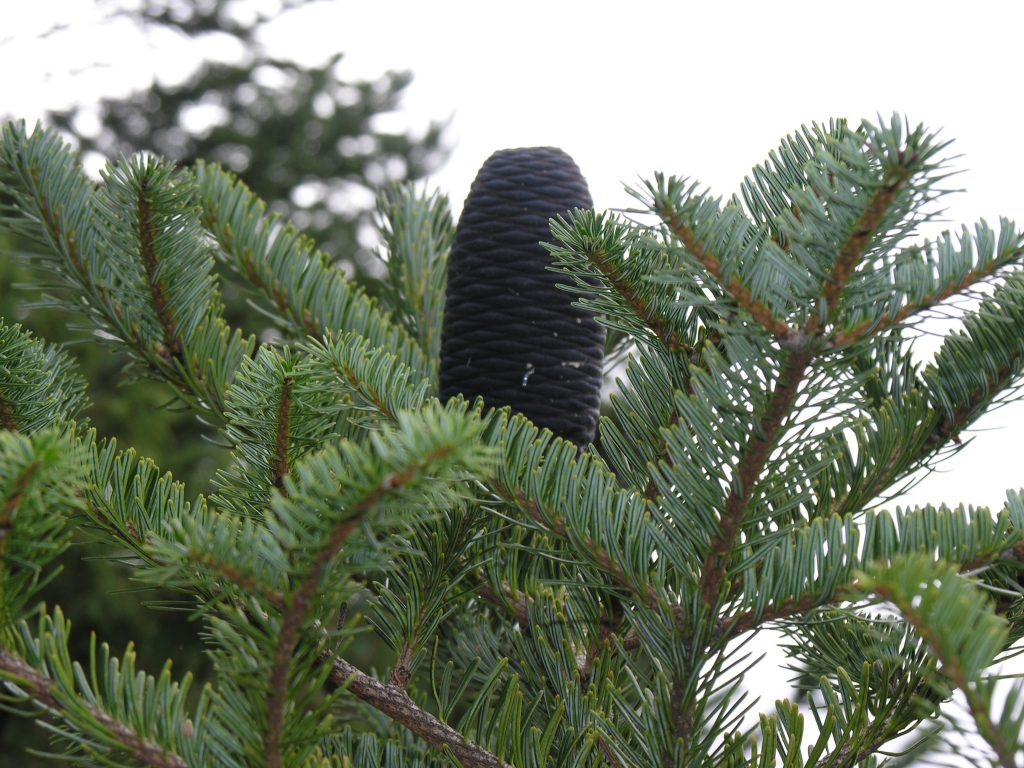A forest giant from Nepal
Abies spectabilis trees reach 50 m in height and form extensive forests on the wet, south-facing slopes of the Himalayas. The canopy is dense, and the under storey open with lots of mosses on the forest floor. In the wettest valleys the trees are festooned with grey Usnea lichen which hangs from the branches.
Abies is used for paper, furniture making and firewood, and it was traditionally used to make wooden shingles for roofs. This practice is extremely wasteful, as only 10% of the tree can be used for shingles, and the rest would be left to rot. Nowadays it is more common to use corrugated iron for roofs.
There is almost no grass in undisturbed Abies forest, so livestock farmers burn it to open the forest and promote the growth of grass. Although Abies is very widespread its conservation status has been assessed as ‘Near Threatened’ because it has suffered a population decline of about 25% in recent times.
Various medicinal uses have been recorded. The dried leaves are thought to improve digestion, and have also been used as an aphrodisiac. Juice from the leaves is taken to treat asthma and bronchitis and is also given to infants suffering from fever and chest infection. The essential oil distilled from the leaves is used for colds, aching joints, and nasal congestion. The leaves are also burned as incense.


3 Comments
3 Pingbacks